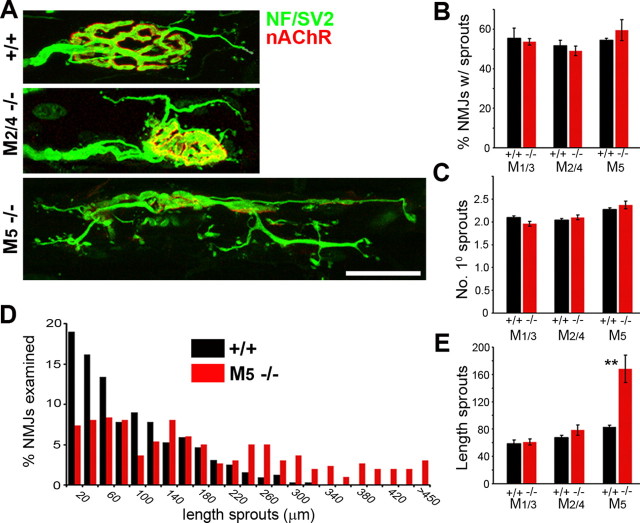Figure 8.
Paralysis initiates normal sprouting in mAChR KO mice. LAL muscles of wild-type (+/+), M1/3−/−, M2/4−/−, and M5−/− mice were paralyzed for 7 d and labeled as described in Figure 1. A, Representative junctions of +/+, M2/4−/−, and M5−/− NMJs exhibiting sprouting. Paralysis induced normal sprouting in M1/3−/− (data not shown) and M2/4−/− NMJs. In M5−/− NMJs, terminal sprouts form numerous secondary and tertiary branches, elongating far more extensively than those observed at +/+ or M1/3−/− or M2/4−/− NMJs. B–E, Quantitative and comparative analysis of the sprouting in terms of the percentage of the junctions displaying sprouts (B), the number of primary branches at NMJs with sprouts (C), relative distribution of NMJs with different lengths of sprouts (D), and the average length of sprouts (E). Terminal sprouts become exceptionally lengthy in M5−/− NMJs attributable to elongation of secondary and tertiary branches. The initiation of paralysis-induced sprouting, however, was normal in M1/3−/−, M2/4−/−, and M5−/− NMJs. n = 3 or more LAL muscles, >100 NMJs per muscle were analyzed. **p < 0.0001. Scale bar, 30 μm.

